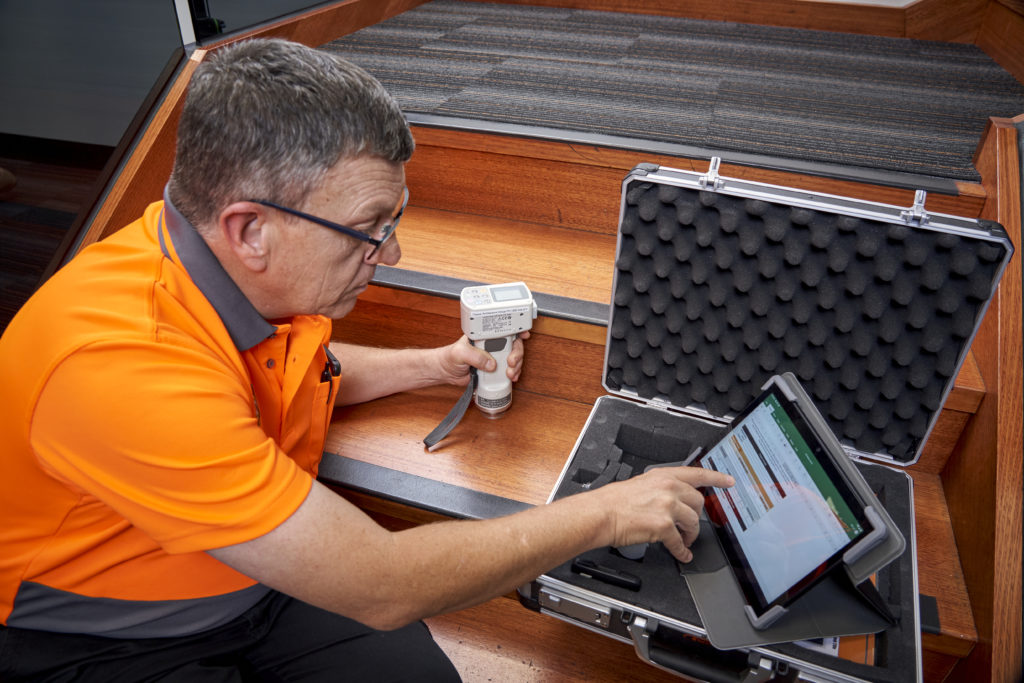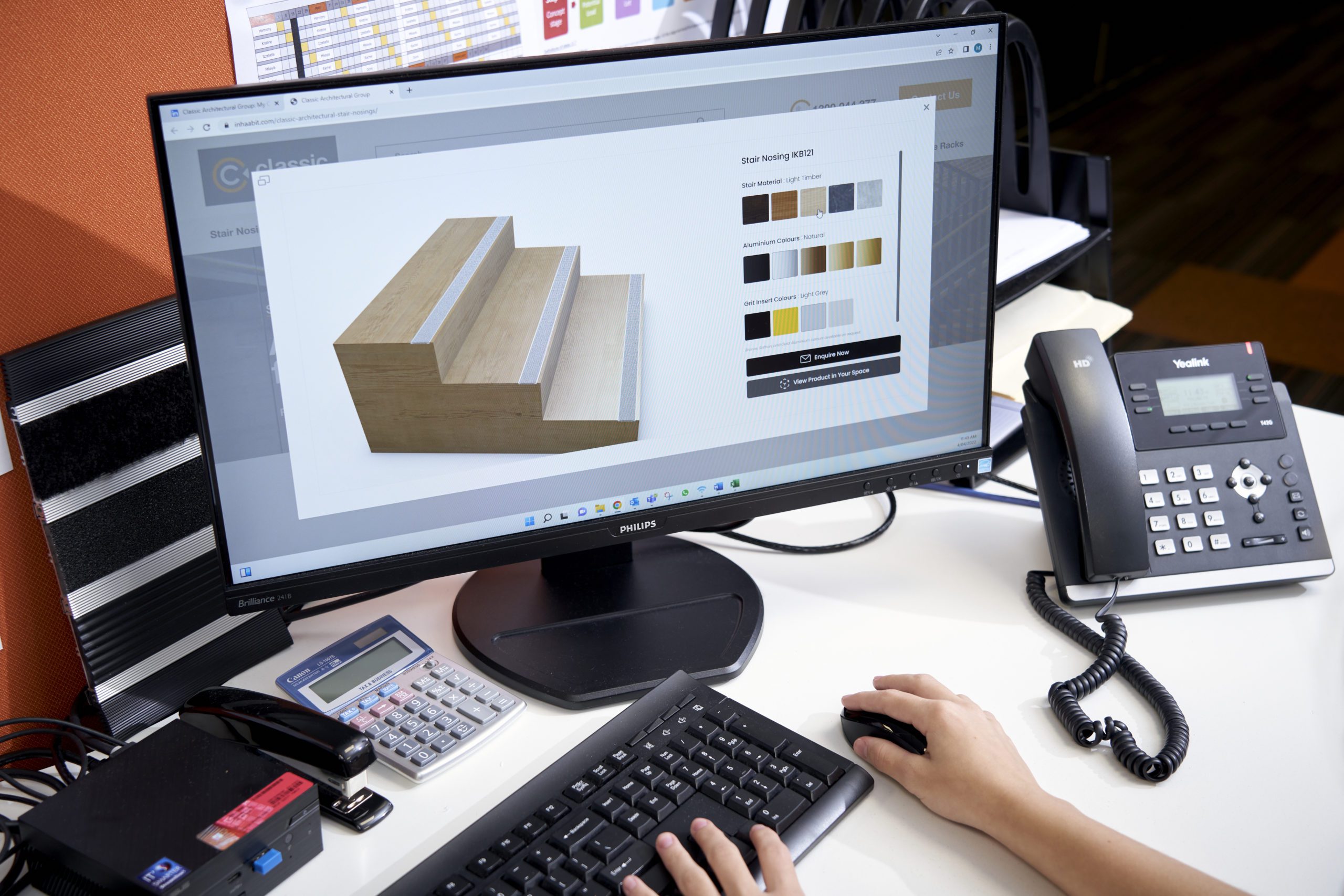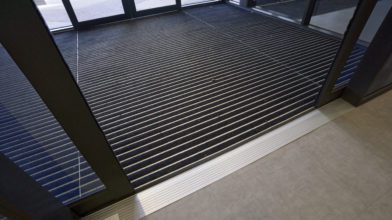The importance of luminance contrast testing for public safety and compliance
Whether you’re planning an exciting new development or refurbishment, stair and floor safety should be factored in the early stages. Good planning and design lead to maximised functionality and can prevent costly mishaps in the long run. Aside from public access, prioritising safety also empowers the visually impaired to safely navigate built environments.
Depending on the location and environment, stair nosings and tactile indicators are often installed to guide users, as well as provide a slip-resistant surface to prevent slips, trips and falls. Warning tactiles indicate the presence of potential hazards; directional tactiles provide orientational cues for safe travel. On the other hand, stair nosings are fitted to the edge of steps to provide an anti-slip surface.
Both of these safety features are required to undergo LRV and luminance contrast testing to ensure compliance with Australian standards.
What is luminance contrast?
Defined in Standard 1428.1 as “the light reflected from one surface or component, compared to the light reflected from another surface or component”, luminance contrast assesses the difference in the light reflective properties of each colour.
Luminance contrast is preferred to colour contrast as it highlights the difference in the light/dark qualities of two adjoining surfaces rather than just their colours

How does Luminance Contrast Testing work?
Comparing the luminance reflectance of two different surfaces, luminance contrast testing ensures that the vision impaired have sufficient visual cues to distinguish between various elements of a building. The determination of the luminance contrast between 2 surfaces, such as a Tactile and its surrounding floor finish is calculated using the following Bowman-Sapolinski equation:
C=125 (Y2 – Y1)/(Y1+Y2+25)
Y1 and Y2 are the Light Reflectance Values (LRV) of the two surfaces.
What is Light Reflectance Value (LRV)?
Light Reflective Value (LRV) is a measure of visible and usable light that is reflected from a coloured surface when illuminated by a light source.
How does LRV get measured?
Measured on a scale of 0 to 100, a 0 score represents a perfect absorbing black while 100 represents a perfect reflecting white.
To measure LRV, the team at Classic uses a Konica Minolta Chroma meter CR-400/410 with a diffuse illumination/normal viewing (d/o) geometry and CIE D65 illuminant.
Are LRV and Luminance Contrast Testing mandatory safety requirements?
Yes, both LRV and Luminance Contrast Testing are mandatory as per Australian Standards (AS 1428.1:2009 and AS1428.4.1:2009), The National Construction Code/Building Code of Australia and The Disability Discrimination Act (DDA).
Safety standards for stair nosings
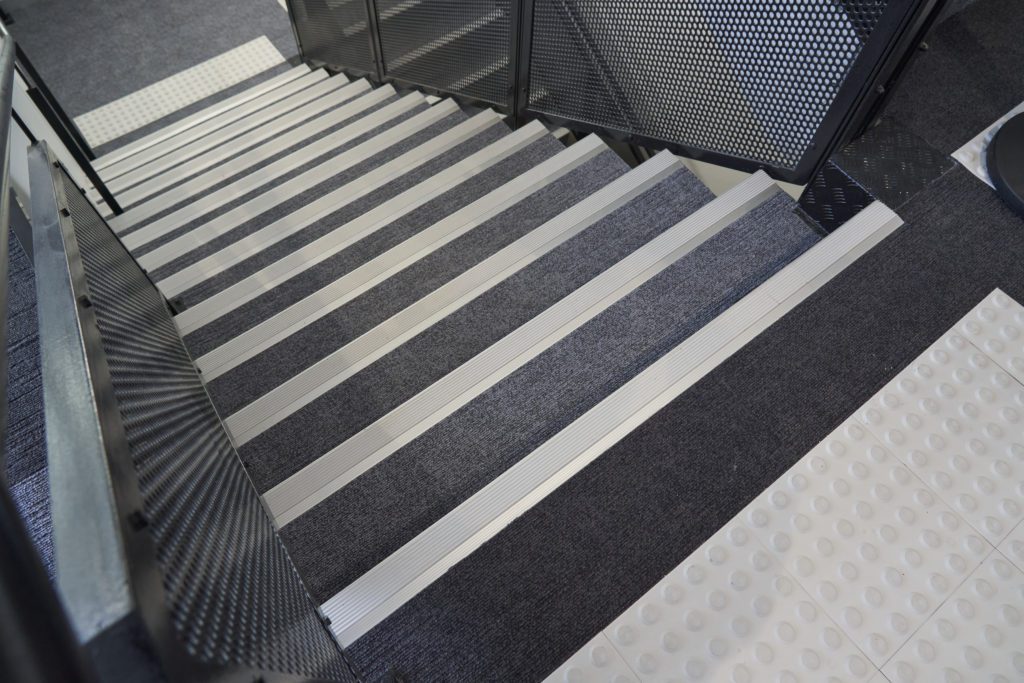
According to AS1428.1, stair nosings are a general requirement for all new building work and must be installed across the entire width of the accessible path of travel.
Clause 11 of the Standard specifically addresses requirements for stairways and stair nosings, with an entire focus on promoting luminance contrast at the leading edge of step treads together with the avoidance of overhang at the front of stair treads.
Stair nosings must meet the following AS1428.1 Luminance Contrast requirements:
- Each tread is to have a minimum strip of 50mm and not more than 75mm deep across the width of the path of travel.
- The nosing strip is to have a minimum contrast of 30% to the floor finish.
- The nosing strip may be set back a maximum of 15mm from the front of the nosing.
- When located at the front of a stair nosing, the luminance contrast strip cannot extend down the riser more than 10mm.
- Stair nosing profiles may have a sharp intersection or a radius up to 5mm, or up to a 5mm x 5mm chamfer at the tread/riser intersection.
For more information on the application and installation of stair nosings, please download our Stair Nosings Product Application Guide.
Safety standards for tactile indicators

The Australian Standards emphasise the need for good design and planning for public spaces, with tactile indicators playing an important secondary role in providing vital warnings and directional information to the vision impaired. This is also supported by the Building Code of Australia (BCA) Section D Clause 3.8, as well as the Disability Discrimination Act (DDA).
This is a safety and preventative measure for all potentially hazardous situations such as rail platforms, stairs, ramps, kerb ramps, pedestrian walkways and vehicle carriageways.
Tactile indicators must meet the following AS/NZS 1428.4 requirements:
- They are required to be installed across the full width of the path of travel, enabling them to be felt underfoot or with the tip of a cane.
- The surface must be slip-resistant.
- Integrated (tile) type tactiles must meet a minimum luminance contrast standard of 30%. Whereas, an individual tactile of one colour needs to achieve 45%, and for two colours 60% is required.
- The top of the tactile indicators must sit no more than 4 -5mm above the base surface.
Learn more about selecting the right type of tactile indicators for your project.
Use our free online calculator to find out if your product selection is Luminance Contrast compliant
Classic Architectural Group provides a free online calculator for assessing the luminance contrast value of a floor substrate with a Classic Tredfx Stair Nosing, tactile indicator, or a product of your choice. The calculator will provide you with the luminance contrast values for dry readings, as well as a pass or fail result.

You’ll instantly receive the results via email. This is a quick and easy way to check if you meet Australian Standards compliance requirements.
To get started, you will need to know the Light Reflectance Values (LRVs) of your Floor Substrate.
Please note that the calculator is only designed for dry readings. However, you can refer to the below guides for both dry and wet results.
What’s the difference between dry and wet readings?
If you are installing products outdoors or in an area where they can get wet, we will also take measurements on wet samples. This then helps us to determine the mean dry LRV and the mean wet LRV so you can choose the most compliant solution for your application.
Ensure your project’s full compliance with Classic’s onsite testing
Supporting your project from start to finish, design to installation and maintenance, Classic will help you to bring your vision to life. Aside from our architecturally-driven floor and stair safety solutions, our team can also ensure that your project is 100% compliant with the Australian Safety Standards.
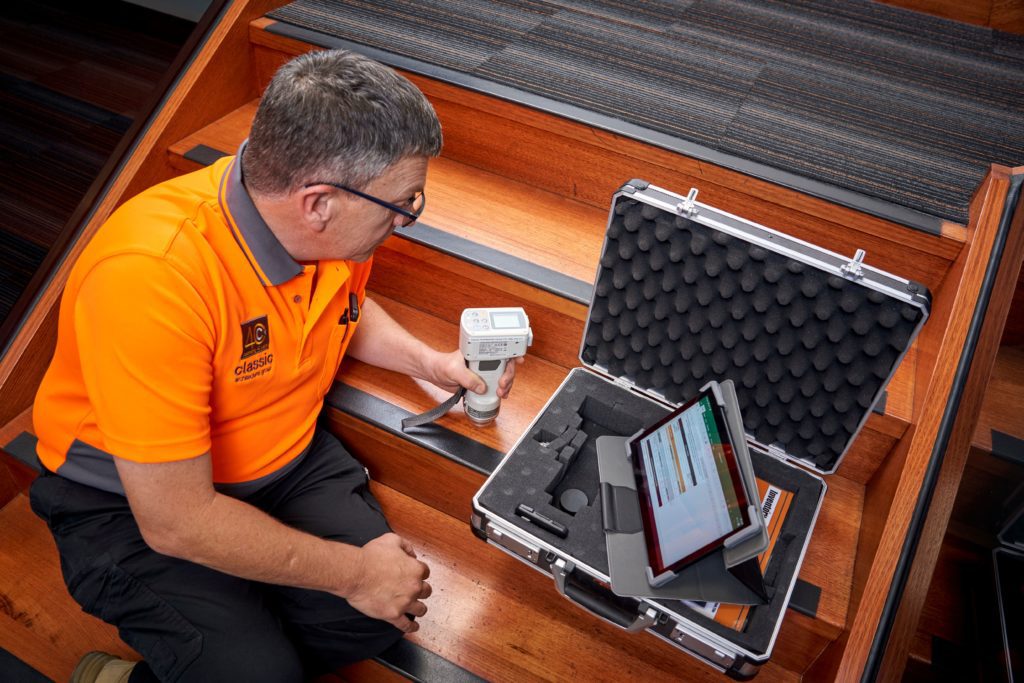
Classic offers both LRV and luminance contrast testing to maximise the efficacy of your stair nosings and tactile indicators. Working closely with your team, we can produce reports from information collected on-site to document your level of compliance with building standards.
To book an onsite inspection or tailored project consultation, please contact our friendly team by calling 1300 244 377 today.
